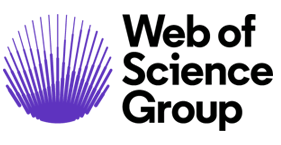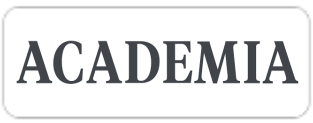Effect of Incorporating Hematite Powder on Torsional Behavior of High Strength Steel Fiber Reinforced Concrete Members
Downloads
This research aims to investigate the effect of hematite powder on the first cracking and ultimate torsional resistance, crack patterns, and angle of twist of high-strength concrete beams strengthened with steel fibers under pure torsion. The study was carried out in two stages. The first stage consisted of six hollow cross-section beams to determine the best ratio and type of steel fiber that provide the highest torsional resistance. The second stage aimed to find the optimal ratio of hematite powder that can improve the torsional resistance of high-strength steel fiber-reinforced concrete without causing implementation problems. This was achieved by testing six hollow cross-section beams with hematite ratios of 0.5%, 1%, 1.5%, 2.5%, 3.5%, and 5% as cement replacements. The results showed that using hematite powder up to 2.5% as a cement replacement, combined with a 1.5% mix of steel fibers (50% end-hooked and 50% corrugated), increased both the first cracking and ultimate torque, along with a relative increase in the angle of twist. Additionally, it delayed crack development, reduced crack width, and increased the number of cracks at failure.
Downloads
[1] MacGregor, J. G., Wight, J. K., Teng, S., & Irawan, P. (1997). Reinforced concrete: Mechanics and design. Upper Saddle River, Prentice Hall, Hoboken, United States.
[2] Ritter, W. (1899). The Hennebique Construction Method. Swiss Construction Journal, 33(7), 59–61.
[3] Rausch, E. (1929). Design of Reinforced Concrete in Torsion. Technische Hochschule, Berlin, Germany.
[4] ACI 318-08 (2008) Building Code Requirements for Structural Concrete and Commentary. American Concrete Institute (ACI), Farmington Hills, United States.
[5] Broo, H. (2008). Shear and torsion in concrete structures. Chalmers University of Technology, Gothenburg, Sweden.
[6] Bernardo, L. F. A., Andrade, J. M. A., & Pereira-De-Oliveira, L. A. (2013). Reinforced and prestressed concrete hollow beams under torsion. Journal of Civil Engineering and Management, 19(SUPPL.1). doi:10.3846/13923730.2013.801895.
[7] Amulu, C., & Ezeagu, C. (2017). Experimental and Analytical Comparison of Torsion, Bending Moment and Shear Forces in Reinforced Concrete Beams Using Bs 8110, Euro Code 2 And ACI 318 Provisions. Nigerian Journal of Technology, 36(3), 705–711. doi:10.4314/njt.v36i3.7.
[8] Mures, J. K., Ahmed, M. A. I., & Chkheiwer, A. H. (2021). Torsional Behavior of High Strength Concrete Members Strengthened by Mixed Steel Fibers. Journal of Engineering, 2021, 1–8. doi:10.1155/2021/5539623.
[9] Nazari, A., Riahi, S., Riahi, S., Shamekhi, S. F., & Khademno, A. (2010). Influence of Al2O3 nanoparticles on the compressive strength and workability of blended concrete. Jornal of American Science, 6(5), 6–9.
[10] Largeau, M. A., Mutuku, R., & Thuo, J. (2018). Effect of Iron Powder (Fe2O3) on Strength, Workability, and Porosity of the Binary Blended Concrete. Open Journal of Civil Engineering, 08(04), 411–425. doi:10.4236/ojce.2018.84029.
[11] Milasi, S. E., Mostofinejad, D., & Bahmani, H. (2023). Improving the resistance of ultra-high-performance concrete against nuclear radiation: Replacing cement with barite, hematite, and lead powder. Developments in the Built Environment, 15, 100190. doi:10.1016/j.dibe.2023.100190.
[12] ASTM C150/C150M-24. (2024). Standard Specification for Portland Cement. ASTM International, Pennsylvania, United States. doi:10.1520/C0150_C0150M-24 .
[13] ASTM C33/C33M-13. (2016). Standard Specification for Concrete Aggregates. ASTM International, Pennsylvania, United States. doi:10.1520/C0033_C0033M-13 .
[14] ASTM A706/A706M-06. (2017). Standard Specification for Low-Alloy Steel Deformed and Plain Bars for Concrete Reinforcement. ASTM International, Pennsylvania, United States. doi:10.1520/A0706_A0706M-06.
[15] Hyperplast PC200. (). High performance concrete superplasciser (Formerly known as Flocrete PC200). Don Construction Products Ltd. Erbil, Iraq.
[16] MSASA (2017). Technical Datasheet of Silica Fume MegaAdd-MSD. MSASA, Cape Town, South Africa. Available online: https://msasa.co.za/wp-content/uploads/2017/11/MegaAdd-MSD.pdf (accessed on August 2025).
[17] Abdullah, M. D. (2018). Experimental and Theoretical Behavior of Reinforced Concrete Two Way Slabs Strengthened by Steel Fiber Ferrocement Layers at Tension Zone. Journal of University of Babylon for Engineering Sciences, 26(3), 199–211. doi:10.29196/jub.v26i3.658.
[18] Kachlakev, D. I., Miller, T. H., Potisuk, T., Yim, S. C., & Chansawat, K. (2001). Finite element modeling of reinforced concrete structures strengthened with FRP laminates. No. FHWA-OR-RD-01-XX, The Oregon Department of Transportation Research, U.S. Department of Transportation, Washington, United States.
- Authors retain all copyrights. It is noticeable that authors will not be forced to sign any copyright transfer agreements.
- This work (including HTML and PDF Files) is licensed under a Creative Commons Attribution 4.0 International License.![]()














